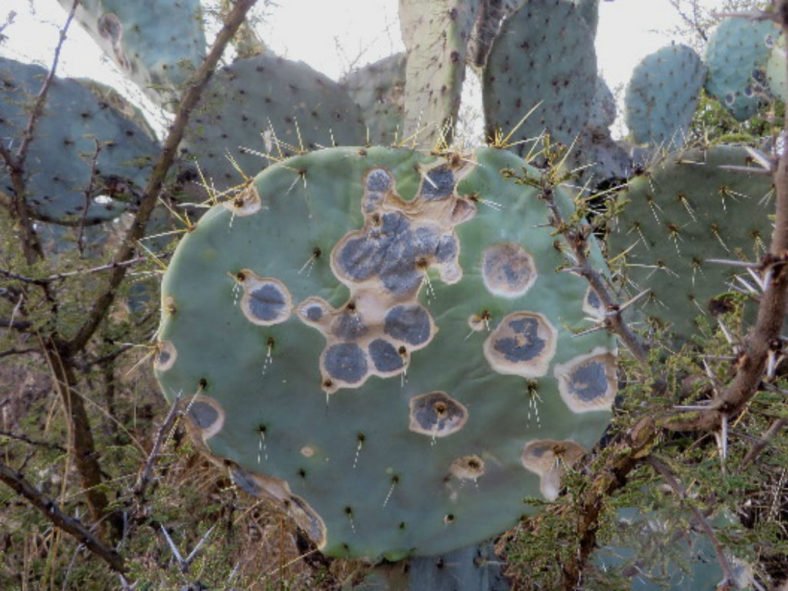Just like any other plant, your cactus can develop a fungal infection. Although some fungal infections do minor damage to cacti, others, left untreated, can lead to the death of the cactus. Therefore, treat your cacti at the first signs of infection for the best chances of success.
Types of Fungal Damage
The vast amount of cacti can only be outcompeted by the many fungal varieties. Fungus spots on cactus pads are a common occurrence. It is often quite impossible to diagnose which fungal organism is causing the spots, but that is generally unimportant since treatments are usually the same.
A few fungal types damage the roots and, eventually, the entire plant, so once their visual damage is evident, it is too late for the plant. On the other hand, simple topical fungal spots are much easier to combat and are usually not life-threatening to the cactus, provided steps are taken to control the offending fungus.
Lesions on cacti can present in various forms. They may be round, irregular, raised, flat, or any other shape. Many are discolored, but the tones can range from yellow to brown and black. Some are corky, while others are weepy. These may ooze brown, rusty, or black fluid, indicating severe infection.

The cacti most frequently plagued by fungal lesions are Opuntias. Fungal lesions on the cactus usually start as water spots or slight discolorations on the plant's epidermis. Over time, as the fungi mature and spread, the symptoms can broaden and even eat into the cambium as the surface skin cracks, allowing the pathogen to enter.
Causes of Fungal Lesions
Outdoor cacti can come in contact with fungal spores in various ways. The wind may blow in spores, which carried in soil, or contracted through splashing water. Plants with consistently wet pads or stems are the worst affected. Conditions where rain or high humidity combine with warm temperatures promote the formation of fungal lesions.
Fungus spots on cactus pads are more prevalent in the springtime. They are also enhanced by overhead watering in areas with high humidity. Greenhouse specimens may be particularly susceptible unless there is adequate ventilation. Condensation adds to the ambient moisture and promotes spore growth.
Soil is another contributing factor. Many soils harbor fungal spores, which persist for years until the right conditions arise. Even purchased potting soil may be contaminated with fungal spores.
How to Treat Fungus
Once a fungus affects your cactus, stopping it cannot be easy. If the damage is not severe, a fungicide spray can usually help. However, if the plant is riddled with lesions, finding some uninfected, healthy material and starting a new plant with a cutting may be the best option. Use a sterile knife to cut and dust it with sulfur to kill any adhering spores that may be present.
Controlling cultural conditions with ample heat, under-stem watering, sterile potting medium, and ventilation will help prevent many fungal outbreaks. Another way to save a plant is to cut out the infected tissue. This method does not work with all fungi, but it may be effective in some cases. Again, sterilize your cutting implements and remove more tissue than appears to be affected to ensure all the pathogen is removed. Keep the area dry as it calluses, and observe for signs of reinfection.
Source: gardeningknowhow.com
Links
- Succupedia: Browse succulents by Scientific Name, Common Name, Genus, Family, USDA Hardiness Zone, Origin, or cacti by Genus